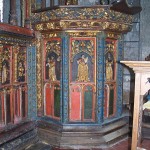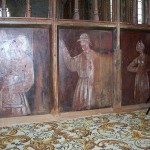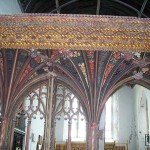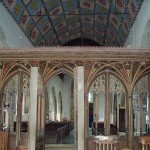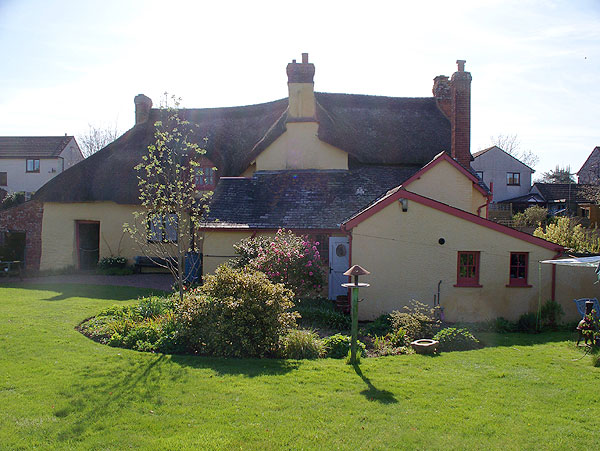The house is of medieval origin, remodelled in Tudor times by the Wake family and further modernised in the 18th and 19th centuries by the Elton family. The floor plan is somewhat irregular. The principal downstairs room is the double-height Great Hall. A fine staircase leads up to the Thackeray Room which commemorates the house’s literary connections. Also on this floor is the large State Room, now set up as a bedroom. Adjoining it is the restored Chapel, with a fine rectangular stained-glass window with reticulated tracery.
Downstairs on the east side of the screens passage is the Justice Room, originally a medieval buttery for beer butts, and now a museum room for a collection of colourful Nailsea glassware. From the screens passage, another passage leads to a triangular courtyard. beyond is the Old Kitchen, a much altered double height room now used as an exhibition space. The Old Kitchen predates the other parts of the house.
Outside, a steeply terraced garden with summerhouses rises behind the house to the wooded land beyond.

















